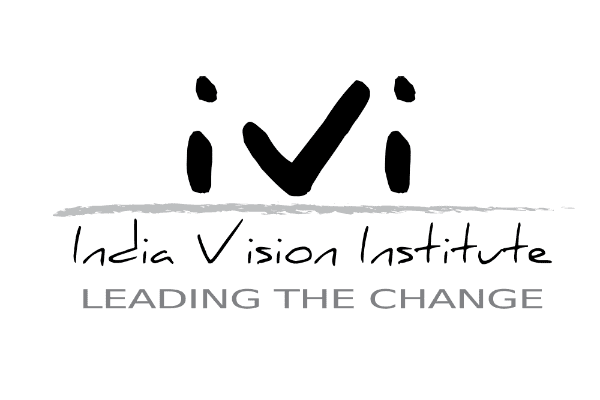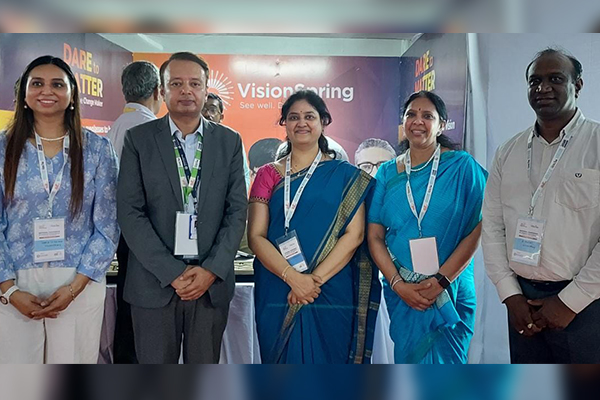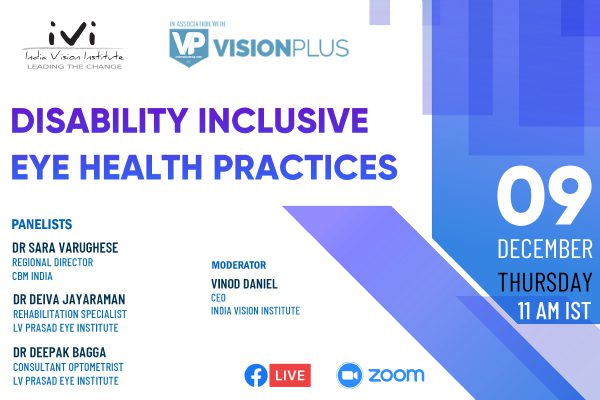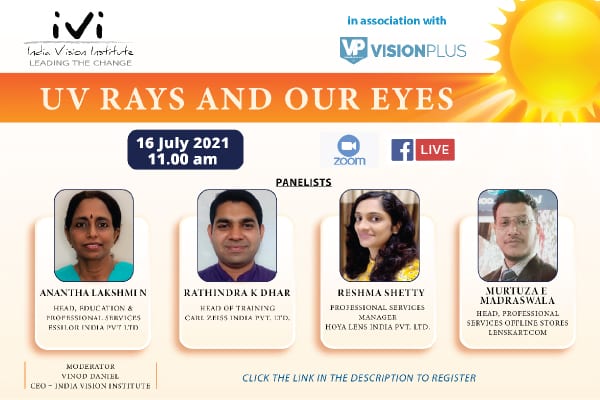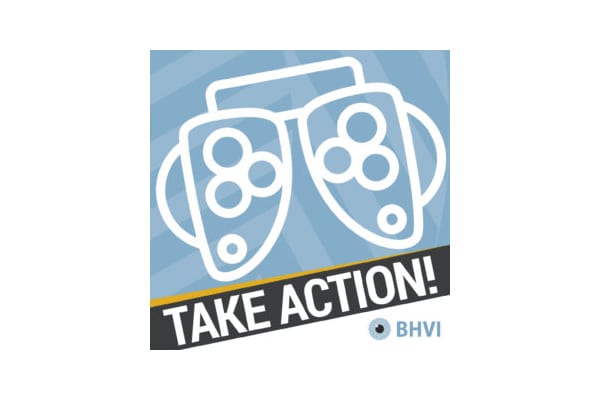The recently concluded 2nd IVI International Optometry Conference hosted a panel discussion session on the key and important issue of Uncorrected Refractive Error (URE).
URE is the leading cause of visual impairment in the world. Uncorrected refractive error needs to be diagnosed by an eye care professional, after a dilated eye examination. A possible way out of the condition is to get your eyes tested and wear corrective glasses if there are no complicated accompanying conditions.
The IVI-VISION 2020 India panel on How can India achieve 40 percentage points increase in effective coverage of refractive error by 2030 evoked a meaningful dialogue. In his keynote address, Dr G.N. Rao, Founder-Chair, LV Prasad Eye Institute, gave a comprehensive overview of the uncorrected refractive error burden, both globally and in India.
He said uncorrected refractive error is a major cause of vision loss in the world. About 161 million people globally live with the uncorrected refractive error condition. In India alone, approximately 85 million people have uncorrected refractive error. Factoring in other conditions such as Presbyopia, it is estimated that nearly 250 million people have significant problems with refractive error in India.
Dr Rao proposed a ‘mission mode’ approach to enhance eye health coverage for uncorrected refractive error by 40% in the nearer term and laid out the path to more sustainable outcomes in the longer term through an ‘Integrated Comprehensive Eye Care System’ model.
IVI’s CEO Vinod Daniel, who led and moderated the discussion along with the CEO of VISION 2020 India, Phanindra Babu Nukella, asked Dr Rao how India can expand eye health coverage for uncorrected refractive error despite resource constraints and other barriers. “Optimization of existing capacity is going to be of vital significance. We need to optimally utilize what we already have because there is a lot of unused capacity in our country at every level,” Dr Rao noted.
The quality of services is equally important. India has the talent pool and resources to enhance eye health service coverage without cutting corners on quality, he said.
Technological advancements can also be a crucial force multiplier and the combination of India’s talent and emerging technologies in the field can prove to be successful in achieving many public eye health goals.
While India has multiple islands of excellence in the tertiary healthcare sector, major gaps still exist in secondary and primary healthcare. Sustainable change will, therefore, only come with a substantial increase in public spending on healthcare and education. As India’s population ages and the burden of various health conditions increases, it is imperative that the State looks at the future, and builds the healthcare infrastructure that Indians will need in the decades ahead.
Early identification of those with uncorrected refractive error will be pivotal to India’s efforts to increase eye health coverage. Screening programs held in schools can be of particular significance. “Which age groups should be targeted for screening programs held in schools?” Mr Daniel asked. Professor Praveen Vashisht, Officer In-charge, Community Ophthalmology, Dr. R. P. Centre for Ophthalmic Sciences, All India Institute of Medical Sciences, said that past practice favoured conducting vision screenings for school children in the 11-15 years age bracket. “More recently, however, even the 5-10-year-old age group is experiencing an increased myopia burden,” he added. The growing uncorrected refractive error burden even among younger children should be a cause for concern. Vision screening programs held in schools would, therefore, do well to cover the entire 5-15-year-old age cohort.
The cost-effectiveness of programs aimed at increasing eye care coverage can be a challenge. Phanindra Babu Nukella asked panelists to outline potential strategies for cost-effective eye health campaigns in a country such as India, where people, especially in remote areas, have low levels of eye health awareness. According to Sandeep Buttan, Technical Lead – Eye Health, Sightsavers, Delhi, cost-effectiveness can be enhanced by leveraging existing resources which are not efficiently utilised for eye care. This will reduce the tendency to create parallel structures exclusively for eye care. For instance, instead of looking for volunteers exclusively focused on eye care, community mobilisation drives can benefit greatly by working with health volunteers and representatives already involved with remote communities at the grassroots level.
Any campaign to increase eye health coverage for uncorrected refractive error will require large-scale dissemination of lenses and spectacle frames. A robust domestic manufacturing industry for lenses and spectacle frames can go a long way in making eye health coverage campaigns cost-effective by reducing the import bill.
Phanindra Babu Nukella asked panelists to share views on India’s eye wear manufacturing industry. “There is a misconception that Indian manufacturers are not globally competitive,” noted Milind Jadhav, Senior Director – Inclusive Business & Philanthropy – South Asia, Essilor India Private Limited. “India does have some world class manufacturing facilities and it exports to markets in Europe, the US, Latin America and Australia.” Indian manufacturers should take advantage of government schemes encouraging manufacturing, while at the same time, bring disruptive innovations that have the potential to transform the market.
Governments can also partner with non-governmental institutions and the not-for-profit sector to deliver quality eye care to those in need.
“In India, the government machinery can really make things happen when it is focused on a task. It has a lot of logistical advantages,” said Anshu Taneja, Country Director-India, VisionSpring, answering Mr Daniel’s question on how best to enhance both the quality and scale of vision screenings across the country. New vision screening programs should take relevant government agencies into confidence. This can potentially ensure greater synergies and deliver better results.
Responding to Dr Nukella on whether India should look to emulate successful public health models for eye health from other countries, Dr GVS Murthy, Director, Indian Institute of Public Health, Hyderabad, remarked that India’s unique circumstances render foreign public health models difficult to apply in our conditions. “It is important to learn from other countries, but to mimic them is not necessarily the best approach,” he argued. India has successful domestic models that can be emulated at the national level. Vision screening programs in several Indian States have yielded rich results. These models have shown that the best technology and human resources can be combined with grassroots community networks to take the benefits of eye health coverage to remotest corners.

